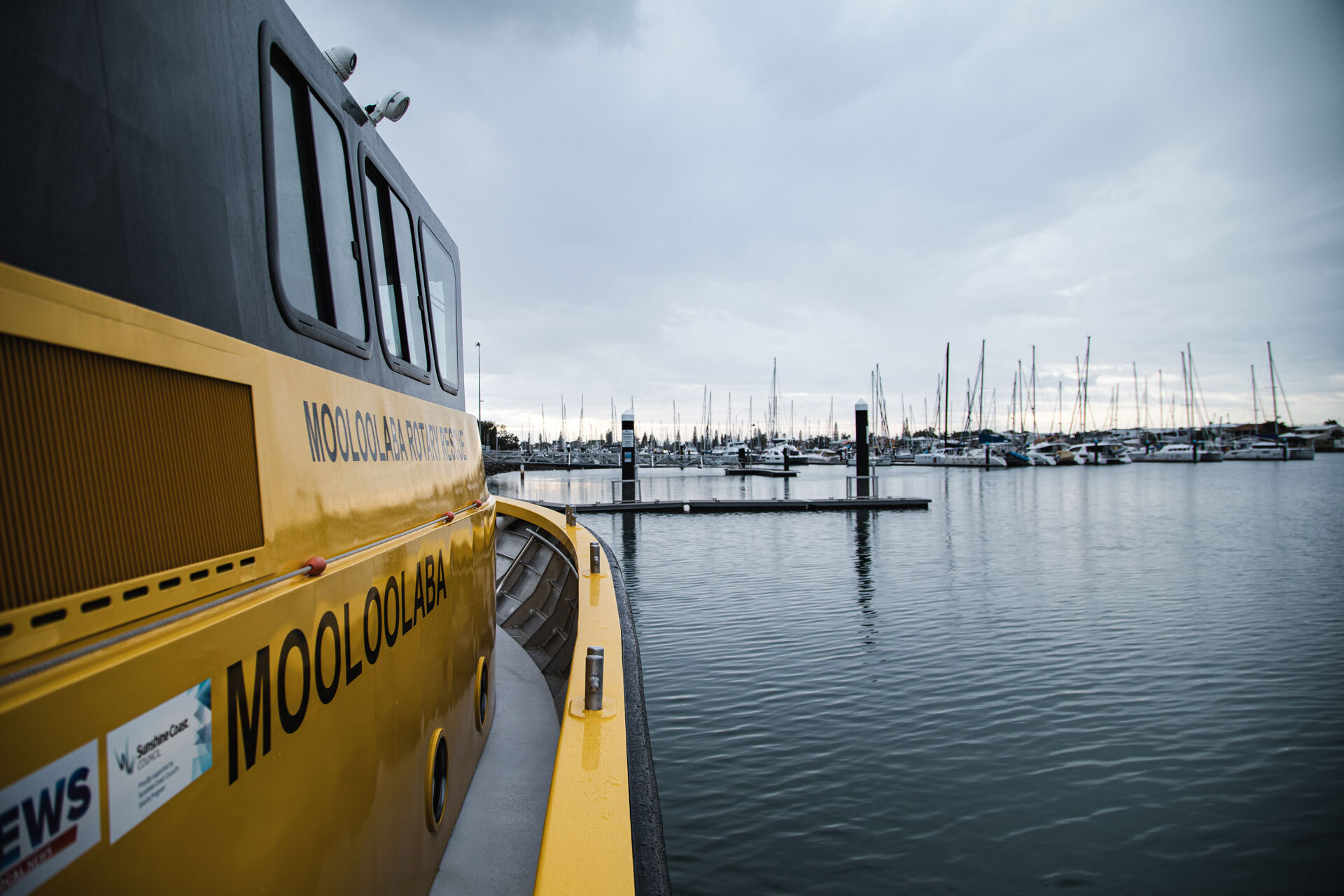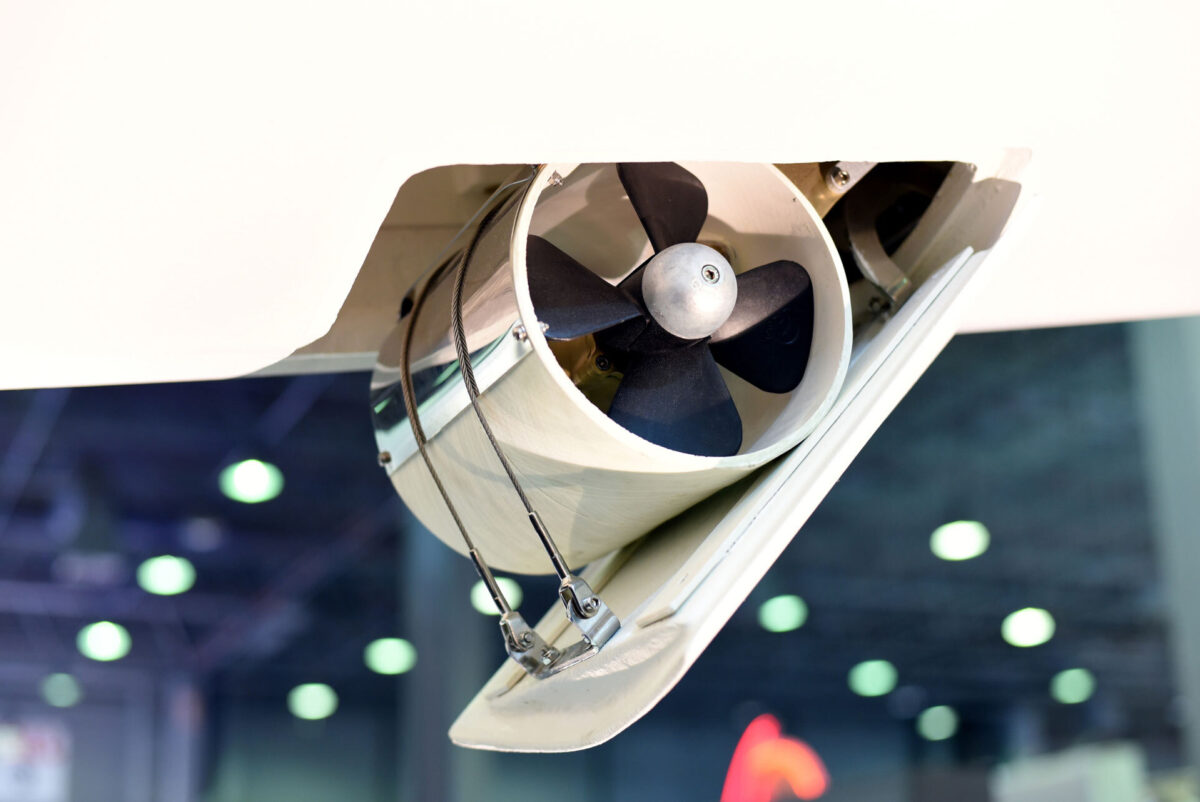Bow thrusters ensure that a boat has the ability to move sideways in either direction while on the water. These allow you to navigate a boat more and fit it into tight spaces, making docking more streamlined. Below we will cover what bow thrusters are and the purpose they serve in greater detail, the difference between bow thrusters and stern thrusters, which situations you are more likely to need a bow thruster in, and the top battery choices for bow thrusters.
What are Bow Thrusters & What Do They Do?
Bow thrusters are propulsion systems that steer the boat and keep the front straight. The thrusters allow the boat to move to either side (starboard or port thrust), which works in conjunction with the engine and rudder to allow for a full range of motion onboard.
Thrusters work by using suction to pull water in from one side of the boat and then push it out from the other side, allowing for sideward movement. These systems make a boat not only more maneuverable but also ensure that docking is also far more simple.
Despite the myriad advantages of thrusters, it’s worth noting that they also come with some challenges, mainly that they require a large amount of energy and can be heavy. For smaller boats, this can be a burden, although some energy storage systems, like lithium batteries, help mitigate the downsides of heavy thrusters due to their ability to offer higher power outputs in a smaller, lighter package.

The Difference Between Bow Thrusters & Stern Thrusters
Both stern thrusters and bow thrusters allow a boat to have more maneuverability, which makes docking and mobility easier. The major difference between these two types of thrusters is those bow thrusters are placed near the bow, or front end, of the boat, whereas stern thrusters are placed at the aft, or back, end of the ship.
A ship operates best when there is both a bow and stern thruster on the boat working together to fully optimize maneuvering and docking. While bow thrusters tend to be more expensive than stern thrusters, especially in terms of installation costs, many boaters consider bow thrusters to be essentially compared to stern thrusters. The reason stern thrusters are often not deemed essential is that most anglers have several other ways to steer the back end of their boats, such as through propellers and rudders.
The Advantages & Disadvantages of Bow Thrusters
There are many advantages to bow thrusters. Firstly, they are easy to use and make docking a far less cumbersome event. Bow thrusters also ensure better maneuverability during strong currents and high winds, allowing for more control and safety on the water. Additionally, for those who use their boats for fishing, these thrusters also assist with positioning the boat to make tracking fish easier.
With the advantages also come some disadvantages, which are mainly centered around the cost of the thrusters. Bow thrusters have a high initial cost upfront to purchase. However, even this disadvantage has an advantage, as selecting to add thrusters to a boat can also increase the value of the vessel by making its resale value much higher.
In addition to this cost, there are also high repair and maintenance costs that come along with bow thrusters. They also require a large induction motor, which can use a great amount of load and current, which in turn necessitates greater generator capacity.

How Bow Thrusters Are Powered
Ideally, bow thrusters are not to be connected to the house bank of batteries, because doing this can lead the thruster to empty the house bank, causing problems with maintaining power onboard overall. The power for a thruster ultimately comes from the motor, which draws its energy from the battery on board. Thrusters can also be powered through hydraulic power sources or electric motors. Electric units onboard are more economical due to their lower cost. Additionally, electric systems onboard have a higher ease of use and are more efficient.
Bow Thruster Run Time
Bow thrusters use a great deal of energy and should only run for approximately 1 to 3 minutes at a time. The thruster is generally only used when there is a need to either dock or maneuver over short periods of time. Even in these short bursts of use, thrusters use up a lot of energy from the boat’s power supply, which means that each use of the bow thruster needs to be accompanied by adequate time for a recharge before they are used again.
Amps Used By Bow Thrusters
The amps that are used by a bow thruster will depend on the size of the boat, as well as the voltage that the boat operates at. As the thrust increases, so will the energy exerted. A boat thruster that is 12 volts, for example, can expect to exert 250 amps, on average, if the thrust is around 130 pounds.
Battery Choices For Bow Thrusters
The main energy storage options for a bow thruster are either a lead-acid battery or a lithium-ion battery. The weight of a bow thruster needs to be factored into the overall weight of a boat, as bow thrusters are already quite heavy, and a lightweight battery can help offset some of the weight added by the thrusters. Whether a battery is lightweight or not should certainly be a primary factor that you consider when selecting a battery to power your thrusters.
The RELiON InSight 12V-LT is a great lithium marine battery for powering the bow thrusters in your vessel. This 120Ah powerhouse lithium iron phosphate battery outputs 160A continuous and offers higher peak discharge. These batteries are scalable, so you can provide increased power and energy as needed. InSight batteries also feature an intelligent BMS that provides precision balancing within a battery and between batteries in a parallel system without the need for charging batteries individually. In addition, our proprietary software determines and manages regenerative currents – unlike any other battery solution - avoiding unnecessary battery disconnects.
Lithium Marine Batteries Are A Better Choice for Bow Thrusters
Lithium Iron Phosphate Batteries (LiFePO4) are the best choice to power a bow thruster, as they are lightweight and take up significantly less space, while still delivering more power than their lead-acid counterparts. Compared to a lead-acid battery, a lithium marine battery on average weighs 50 percent less. Saving space on a boat is also important, and lithium batteries are not only lighter than lead-acid batteries but also take up far less space due to their compact size.
LiFePO4 batteries also have longer lifespans than lead-acid batteries, lasting up to 10 times longer. Lithium batteries also require no maintenance over their extended lifespan and have a greater depth of discharge as well, resulting in less time spent recharging.
If you want to learn more about bow thrusters and the best choice for powering them on your boat, contact a RELiON specialist today to discuss the best option for your boating needs.
